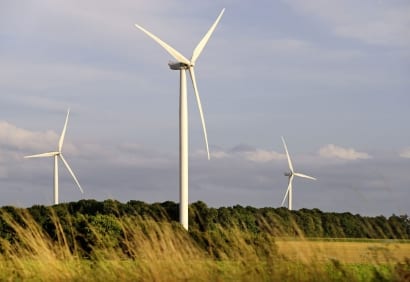The first successful project in the ACT government’s second large-scale wind reverse-auction – and South Australia’s first new-build wind project since the introduction of the new national renewable energy target – has achieved Australia’s lowest known contract price for renewables at $77/MWh.
The 100MW Hornsdale project, which is being developed by French renewables group Neoen in partnership with Australia’s Megawatt Capital Investments, will also deliver millions of dollars in local economic benefits to the ACT,  according to environment minister Simon Corbell.
according to environment minister Simon Corbell.
“This is the cheapest wind energy ever procured in Australia,” Corbell said in a statement on Monday. “And at the same time the developers of the Hornsdale wind farm will be investing over $10 million into our local economy, with research and development with our leading universities and with start up companies.”
The $10 million includes $1 million to help build the ACT’s training services for renewable energy and battery storage, and $6.5 million to help develop applied research facilities, programs and services.
It also includes $2.7 million for an “energy innovation precinct” fund, which would provide help such as accommodation support for businesses in the field looking to set up in Canberra.
Corbell said the company had also committed to spend at least $800,000 engaging local contractors for significant parts of the wind farm development.
The Hornsdale project – which will be built on “one of the best sites in Australia for a wind farm”, according to Neoen Australia managing director Franck Woitiez – will be managed from the company’s headquarters at CIT’s Bruce Campus in Canberra’s north.
Once completed, it is expected to power 56,000 Canberra houses, and provide 13 per cent of the ACT’s projected electricity demand by 2020.
“The local investment benefits secured through this deal will strengthen the ACT’s position as an internationally recognised centre for renewable energy innovation and investment. It will help establish a new energy innovation precinct to be established around City West and New Acton,” Corbell said.






